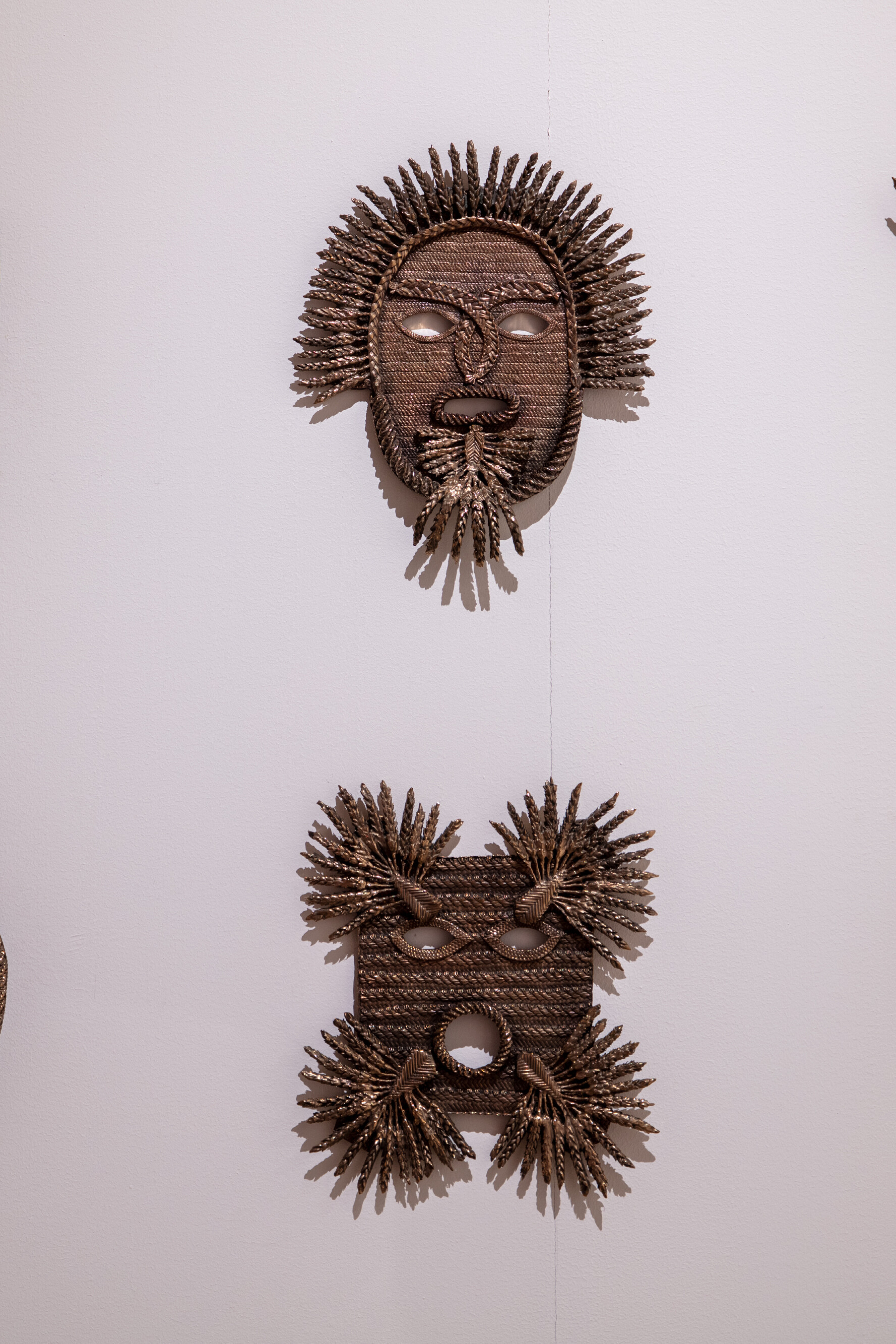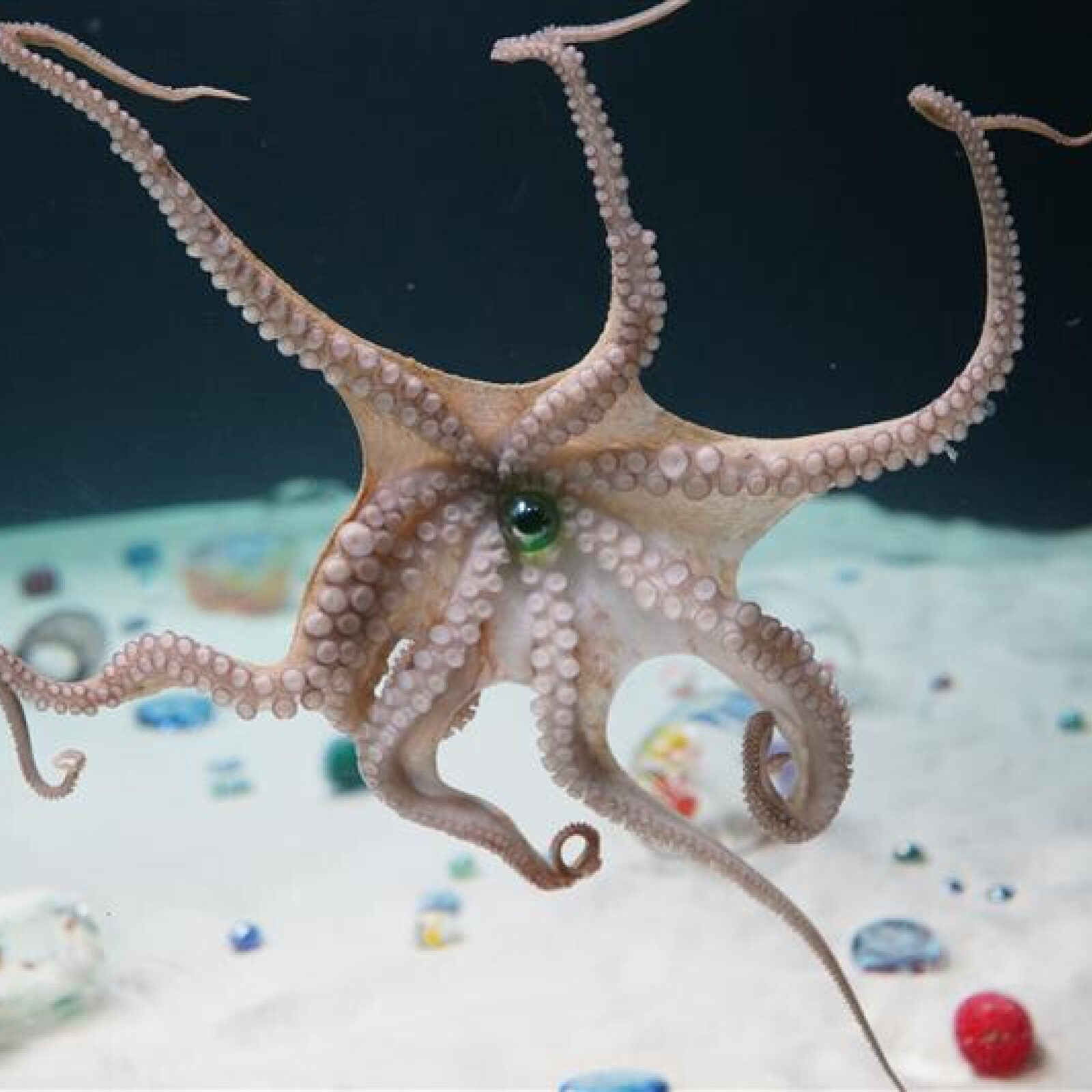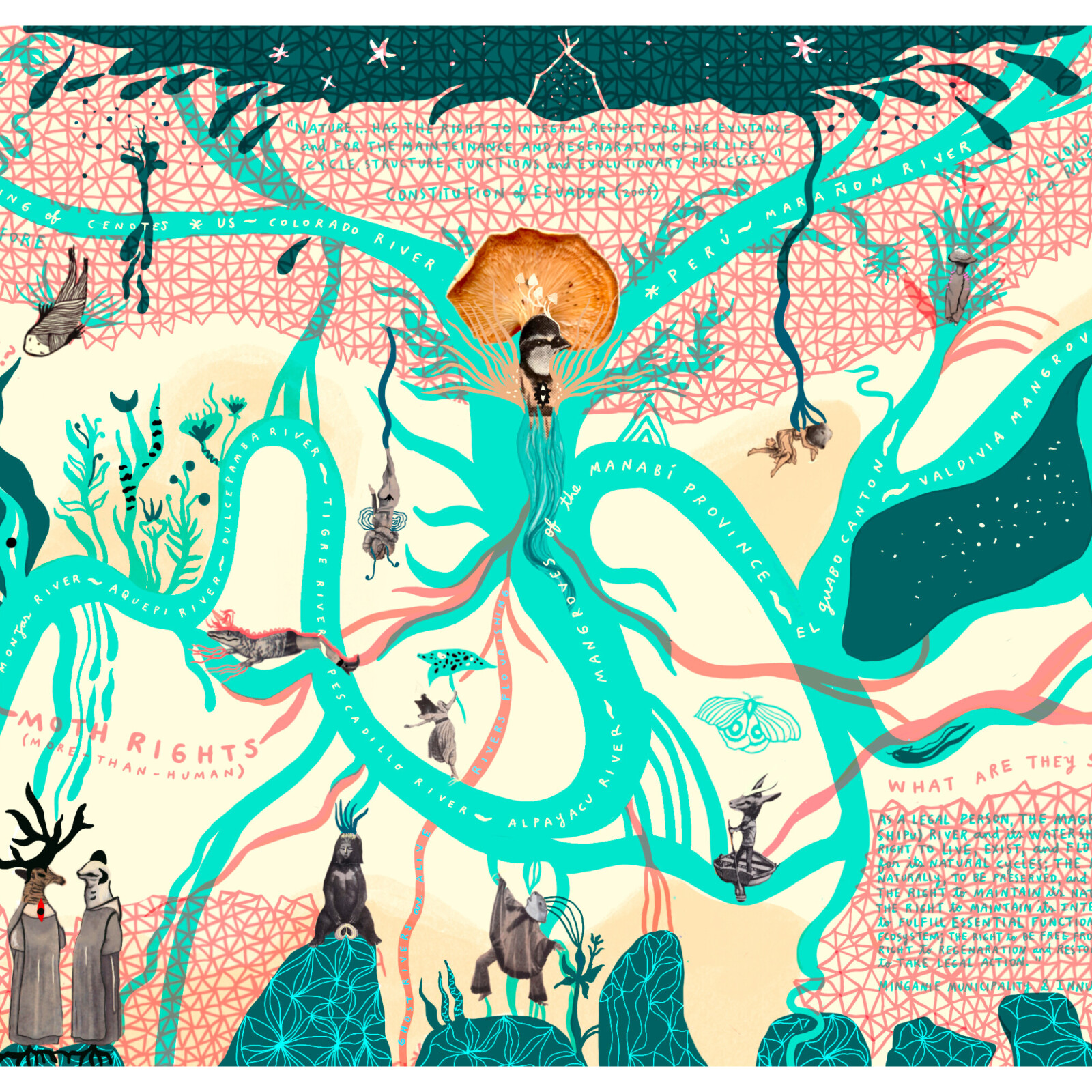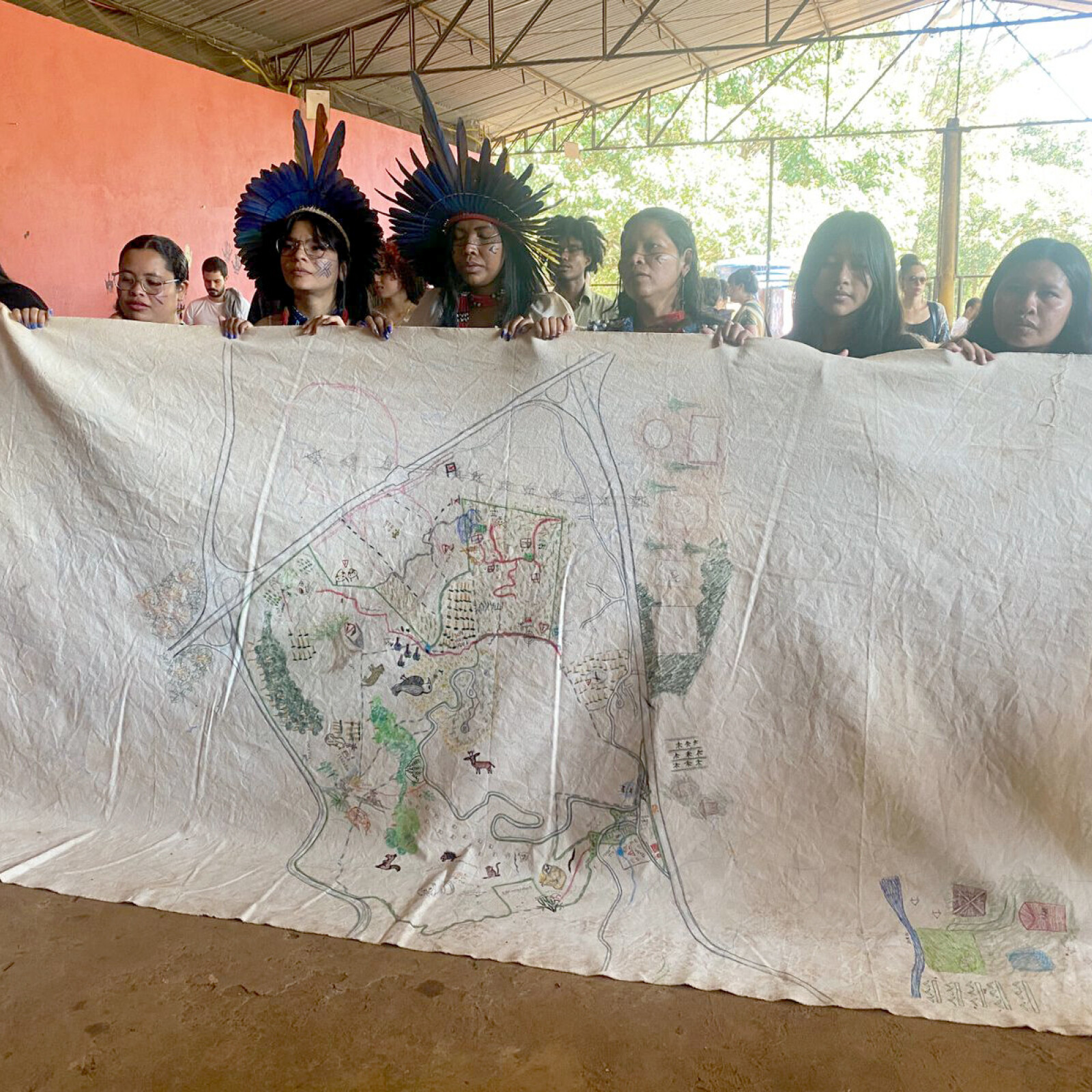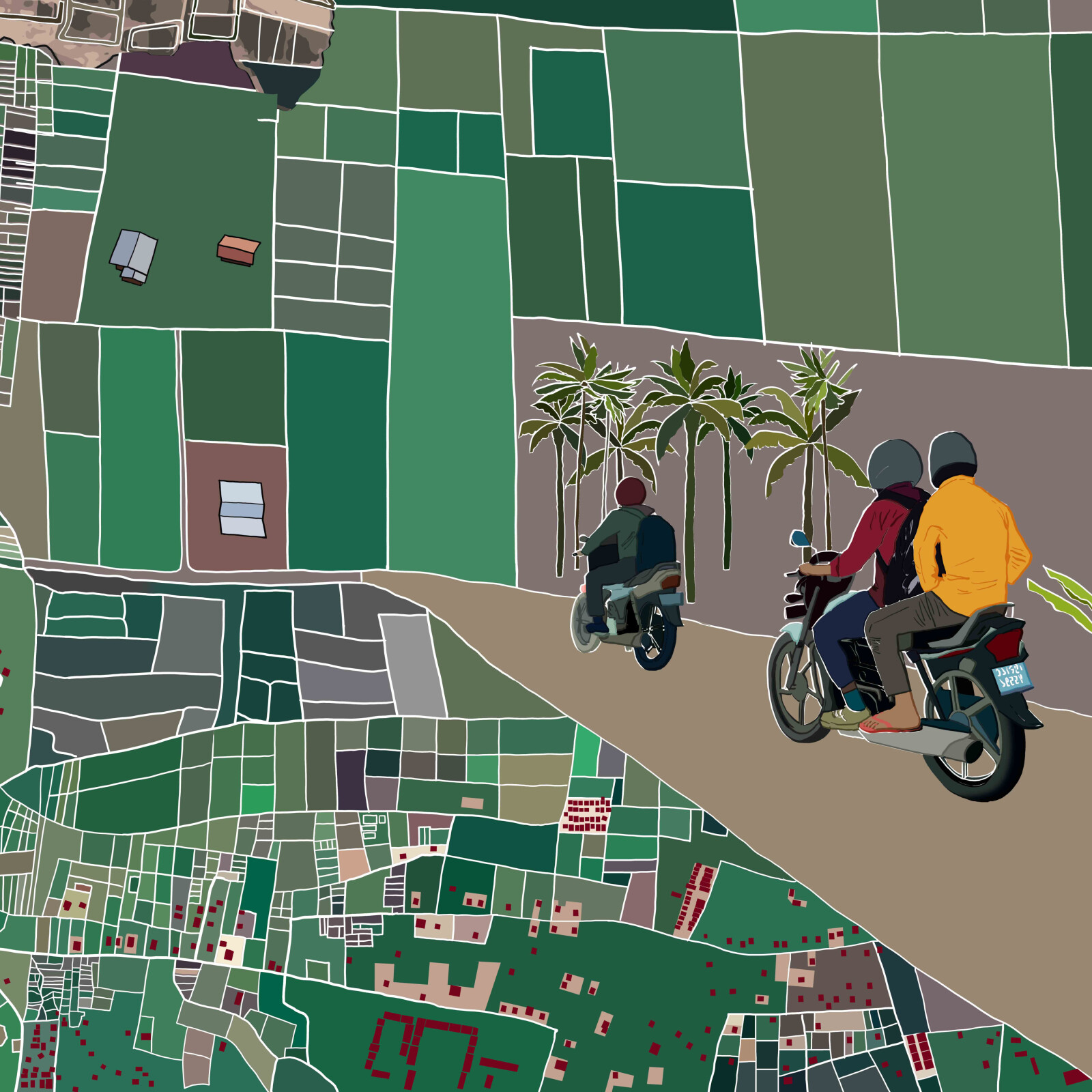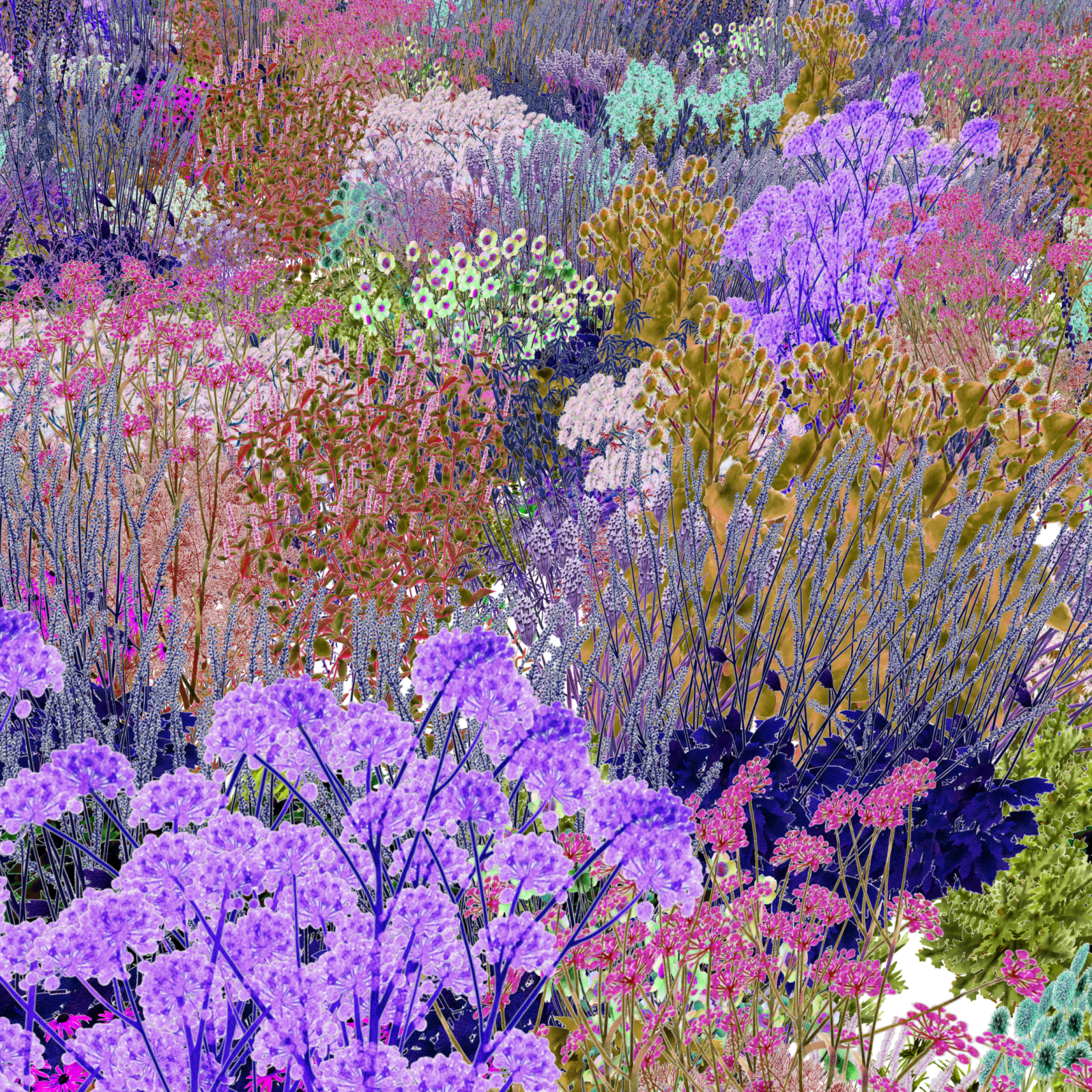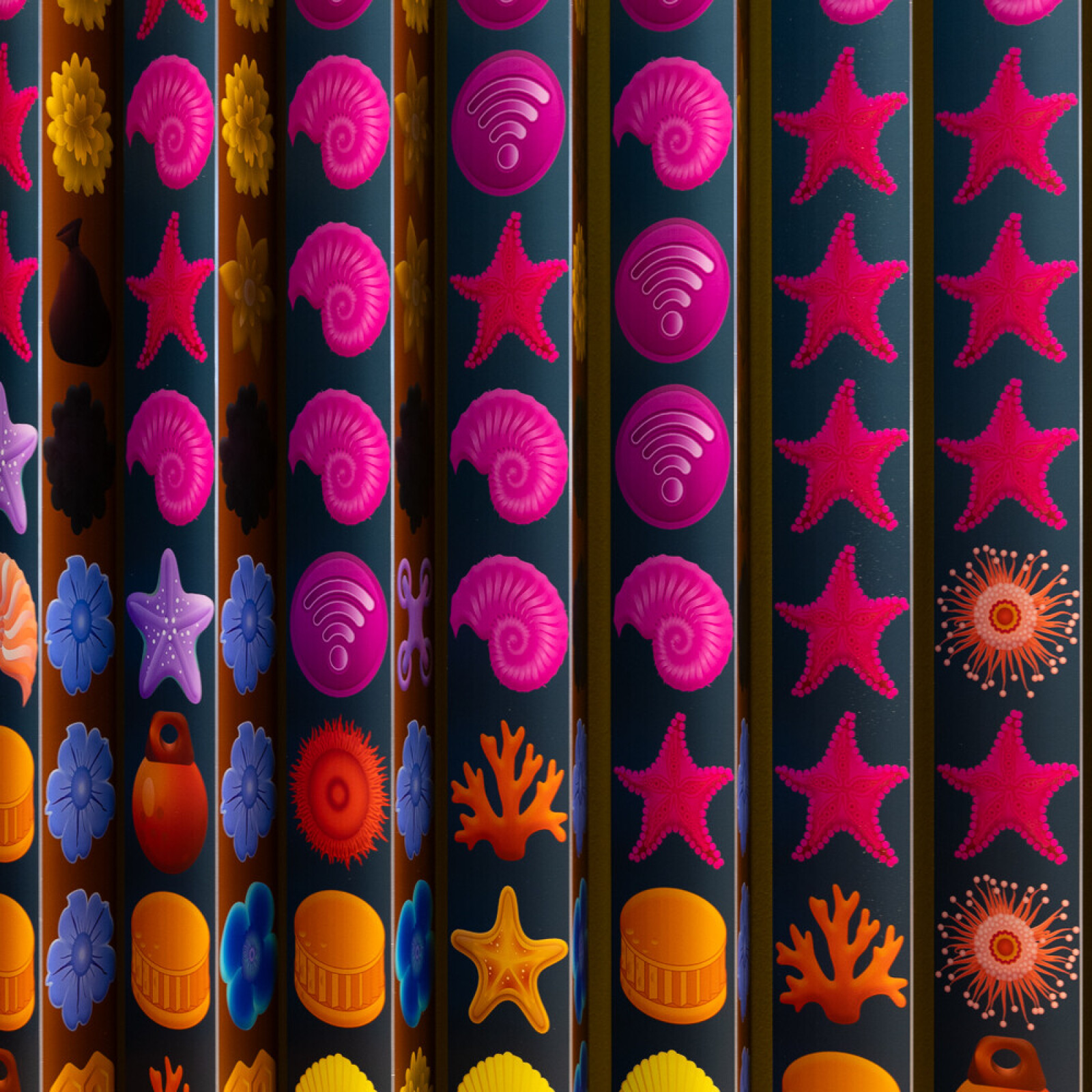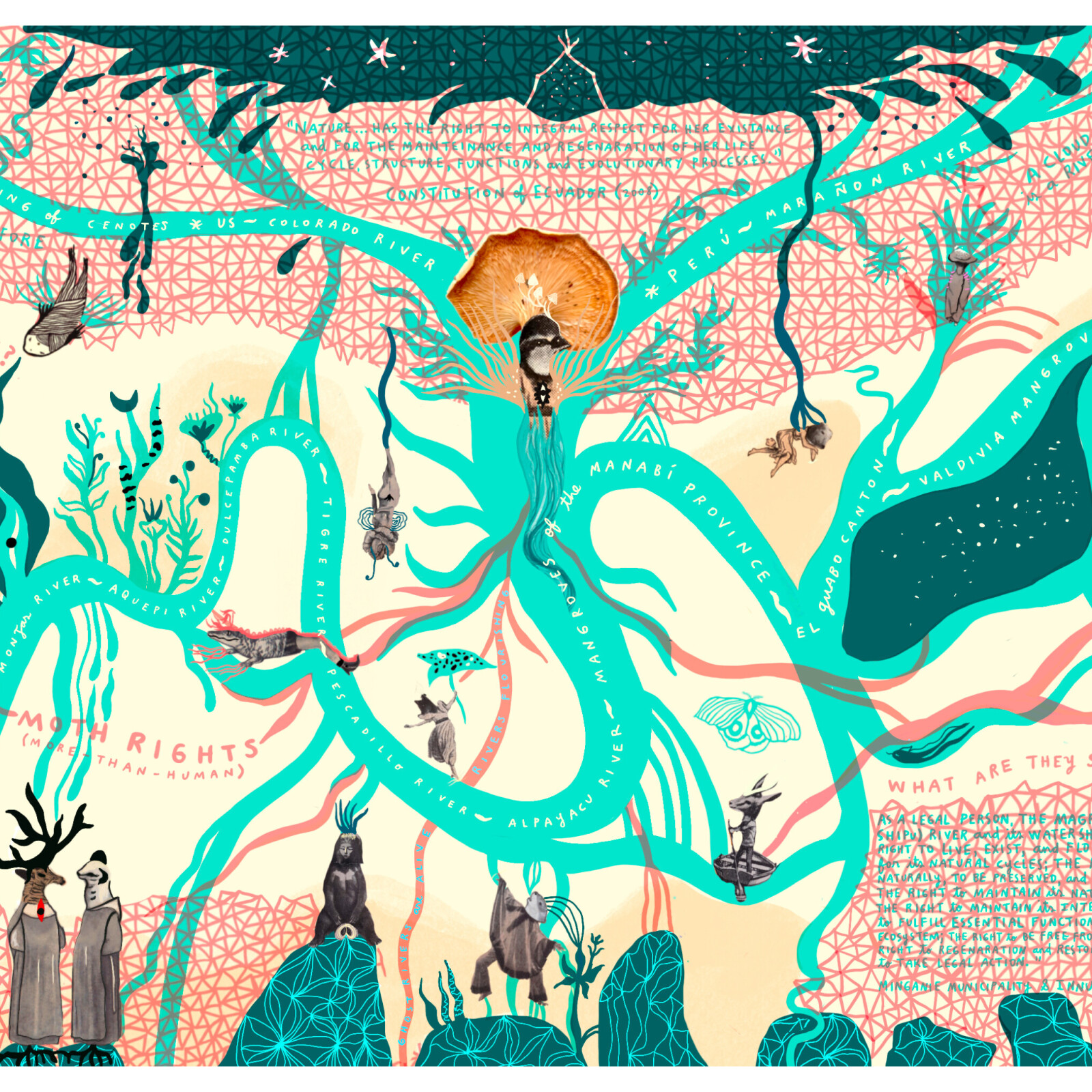‘We’ are not the only kind of we.
Eduardo Kohn, How Forests Think
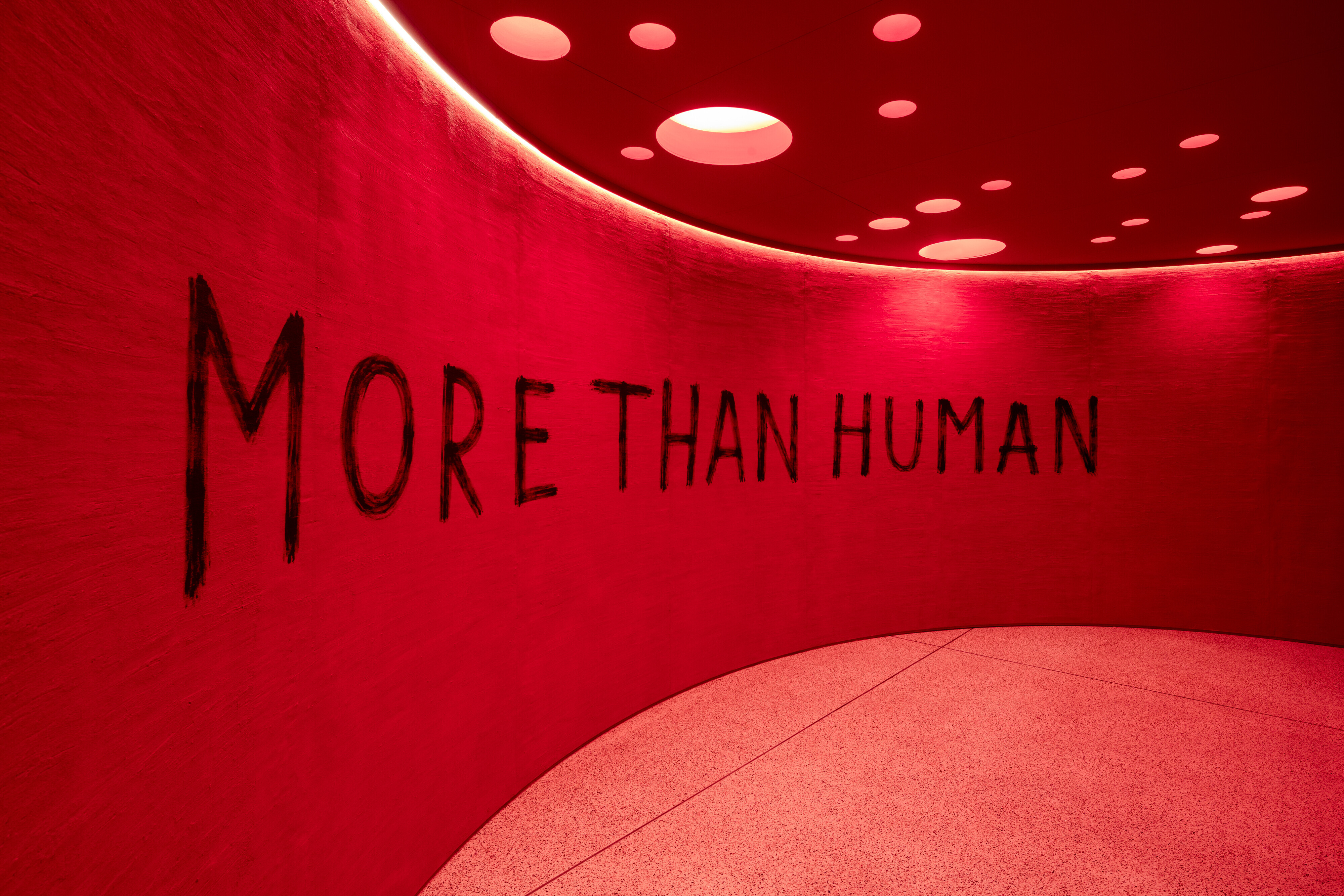
The irony of calling our age the ‘Anthropocene’ is that, in acknowledging the awesome power of humans, we place ourselves at the centre of things just when we should be doing the opposite. Yes, we have proven our capacity to change the climate. But do we undo global warming and ecocide by doubling down on our heroic ingenuity, by speeding up the technofixes, or by returning some agency to the living systems that sustain us?
This is a fundamental question for design. There is a great deal of thought and care going into the limiting of human impact on the planet. For decades now, designers have promoted recycling, reuse, repair, low-carbon materials, biomaterials, zero-waste solutions, net-zero construction and other sustainable initiatives – all of which remain essential and ever more urgent. But let’s be clear that in most cases such efforts amount to a form of damage limitation, the shaving off of carbon emissions, plastic and pollution by tiny increments. As planetary warming targets recede in the rearview mirror, does it not feel as though we need a shift in narrative? What if we were to frame the entire problem differently? Rather than asking how we reduce our impact, what if we asked how we can design for the flourishing of natural ecosystems and other species?
The very act of asking that question requires a shift in perspective. Rather than viewing the world exclusively through the lens of human needs and desires, it requires us to think about what other species need to thrive. The question demands a transition from a human-centric worldview to one that acknowledges that we live in a world that is more than human. Anthropologists have been grappling with the implications of this shift in perspective for at least two decades. Only recently, however, has the concept of the more than human begun to take root in design. A new generation of designers and architects is emerging who are forging alternative forms of practice that break away from consumerist models and seek to reframe our relationship with non-humans.
The term ‘more than human’ was introduced by the ecologist and philosopher David Abram in his 1996 book The Spell of the Sensuous. Reflecting on it nearly 30 years later, Abram writes: ‘The phrase was intended, first and foremost, to indicate that the realm of humankind (with our culture and technology) is a subset within a larger set – that the human world is necessarily embedded within, permeated by, and indeed dependent upon the more-than-human world that exceeds it.’¹ Despite being a rather clunky composite, the phrase appears to have stuck. That may be because, unlike words like ‘nature’ or ‘environment’, there is no way of saying it without repositioning humans in the order of things. Sometimes the phrase ‘more than human’ is used to allude to the world of our own technologies, such as AI, which give the impression of having their own agency. But that was not Abram’s intention, and nor is it ours in this book. Rather, the phrase seeks to weave humans back into the infinitely complex tapestry of the living world. It is, above all, an appeal to humility, a word that Abram notes shares the same root as human and humus, the very stuff of the earth.
To invoke the more-than-human world is to acknowledge that humans are not the only worldbuilders. Non-humans – from worms to bees, microbes to fungi, trees to otters – create the ecosystems that feed us and the very atmosphere that we breathe. As Darwin noted in 1881, ‘Worms have played a more important part in the history of the world than most persons would at first assume’.² Acknowledging the millions of ‘small agencies’ that have made the planet habitable is also, inevitably, to recognise the ways in which human activity has disrupted that agency – from intensive agriculture to infrastructure such as dams, to chemical fertilisers, monocultures and microplastics.
We know that raising awareness of the catalogue of landscape despoliation, biodiversity loss and species decline has not been enough to halt it. We know that the mantra of ‘sustainability’ has not been enough either. The potential of more-than-human design is that it radically reframes the issue by prioritising not human needs but the living world we depend on. What does it mean to design not just for ourselves but for other species and for the health of natural systems? As a discipline, design is still only in the infant stage of knowing the answer to that question. More-than-human design is a nascent, still in many ways theoretical, form of practice. It is difficult to point to. There are no more-than-human laptops or toothbrushes. It is too soon to expect ‘solutions’. But, as an outlook, more-than-human thinking has the potential not just to reframe design’s role in the world but to generate something much more fundamental: a liveable future based on our coexistence and collaboration with other species.
The Natural Contract
At the root of all climate and ecological crises is the idea that humans are separate from nature. Human exceptionalism, based on the notion that we are the supreme intelligence on Earth, has been deeply internalised, at least in Western thought. It is at the core of the Judaeo-Christian tradition, and the biblical notion that we have dominion ‘over all the earth, and over every creeping thing’. Human-centrism was a tenet of Enlightenment science and philosophy, with its critical distinctions between nature and culture, rational and irrational. The history of modernity, which is one of human progress through technology, can equally be framed as the freeing of the majority of humanity from a direct dependency on the land through industrialisation and urbanisation. Never mind other non-Western cosmologies or Indigenous belief systems that view human civilisation as deeply entwined with the living world: in the modern project, the damage to ecosystems through extraction and pollution was simply an externality – a necessary evil – in the name of development and progress.
Design has been a crucial force in the delivery of modernity. It is a fundamentally human-centric discipline. Indeed, we uphold human-centred design as a mark of quality, as an aspiration. In software and interaction design, for instance, designing for the ease of the ‘user’ was seen as a significant step away from the kind of engineering thinking that privileged the logic of the machine or system.
So does more-than-human design – which proposes not to put the human first – challenge the very definition of design as we understand it? In some ways it does. But that is not to dispense with the essential humanism of design, and all that is has achieved in making life more liveable for people. Rather, the challenge that more-than-human design presents is how to move beyond that obsession with human comfort, which has come at the expense of so many other species.
In his book The Natural Contract, Michel Serres pointed out that the achievements of the Enlightenment came at a significant cost. Thomas Paine’s The Rights of Man and Jean-Jacques Rousseau’s The Social Contract had established the equality of men in the eyes of the law, but they left out the rights of the natural world. He argued that, as well as a social contract, we need a natural contract based on ‘symbiosis and reciprocity’. For Serres, this required a complete repositioning of humans’ place in the world. This position is reinforced by the word ‘environment’ – that which is around us – a word that places humans at the centre of the natural world. ‘Thus,’ he writes, ‘we must indeed place things in the center and us at the periphery’.³
While Serres takes a provocatively radical stance, the extent to which humans are dependent on natural systems has always been understood by ecologists and has been a central tenet of the environmental movement since at least the 1960s. Today, we talk about being ‘entangled’ in those systems. And while that entanglement has become a cliché, it remains a useful metaphor for the complexity of the web of life. It has been deeply encouraging in recent years to see emerging designers abandon the canonical preoccupations of design (more products, more buildings) to explore that complexity. They may be thinking about the health of the soil, the role of fungi in forest ecosystems, supporting the diversity of urban wildlife, restoring coral reefs, studying traditional forms of land-use or indeed Indigenous ways of living in harmony with the land. They will be working with ecologists, anthropologists and natural scientists, breaking down the disciplinary boundaries between man-made and worm-made, between modern and ancient, between culture and nature.
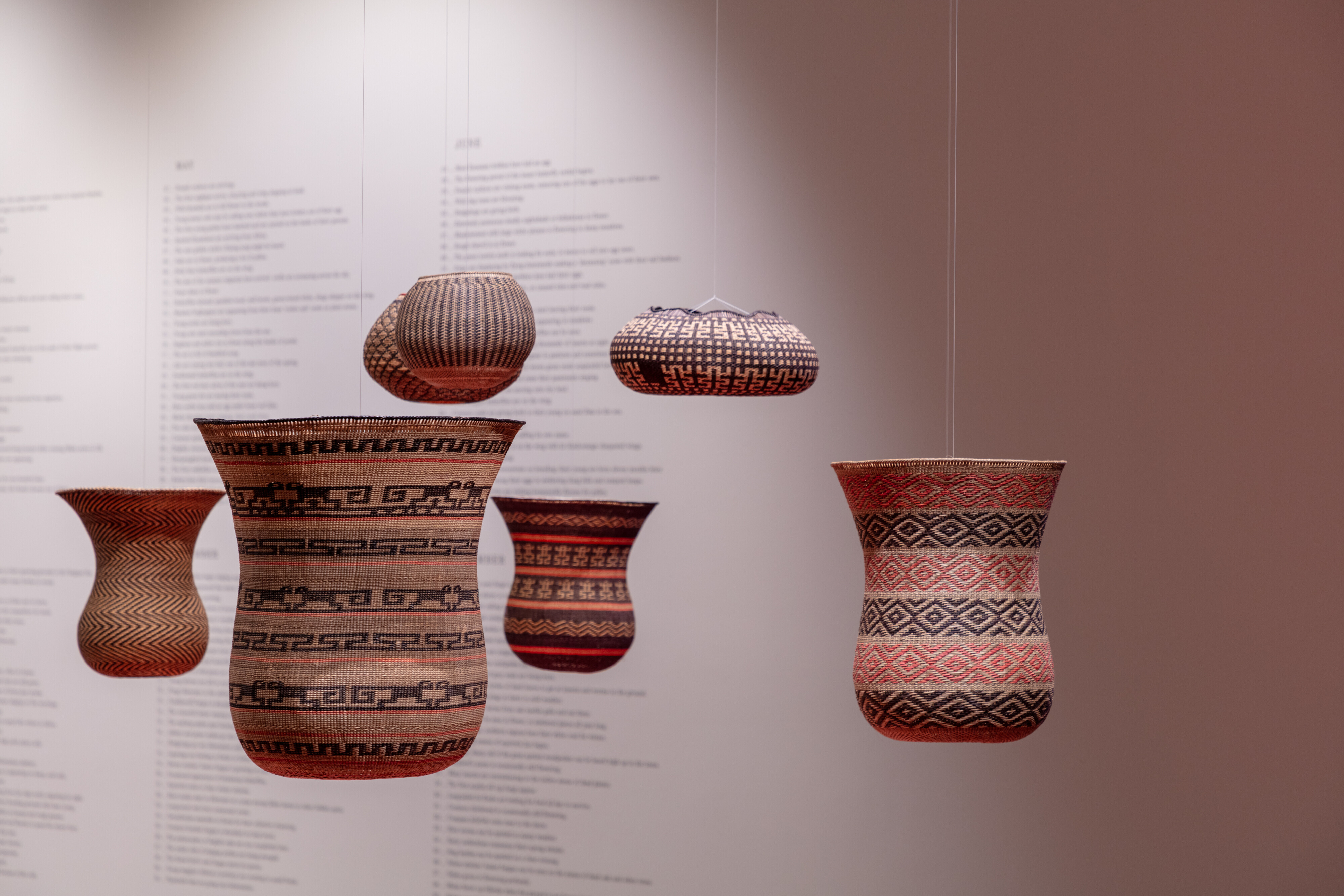
Making-with the living world
In dissolving the boundaries between ‘human’ and ‘nature’, one of the examples that I have found instructive is the basket-weaving of the Ye’kuana people of the Venezuelan Amazon. The Ye’kuana are renowned for their basketry, which is considered an essential skill for all members of society, and is imbued not just with tremendous craftsmanship but with a cosmology based on the animate life of the rainforest. While the Ye’kuana consider their baskets ‘culture’, they become so not by being fashioned with their own hands, but by requesting the forest’s permission to use its materials. This is granted through ritual and song, and only then can a basket be woven. The result is that the basket is sacred, essentially an extension of the forest, and distinct from any of the industrially manufactured objects they may have acquired elsewhere. The basket, in other words, is imbued with the spirit of the forest and is still in some form ‘nature’.
Some might categorise this practice as mere superstition or, at best, a considerate form of extractivism. A better way of thinking about it is as a form of coexistence with an ecosystem and a profound acknowledgement of the source of all life and craft. Baskets, the symbol of Ye’kuana culture, are a form of design that is collaborative with the living world.
The theorist Donna Haraway might call this approach to basket-weaving ‘sympoiesis’, which simply means ‘making-with’. One of the ways Haraway has challenged human-centrism is by defining human history as a process of becoming-with all of the countless species that we have coexisted with and depended on. In this, she is building on the work of evolutionary biologists such as Lynn Margulis, who established that species evolve not just through competition, as Darwin thought, but also through mutual cooperation, or symbiosis. By the same token, making-with is an entreaty to make in a way that is engaged with other living beings.
Haraway herself is rarely specific about what that might look like. Contemporary designers, on the other hand, provide any number of examples. It might be designing modular frameworks that enable coral reefs to regenerate themselves; it might be designing architectural facade systems that can play host to insect- or bird-life; it might be designing ‘living’ breakwaters using millions of oysters to prevent flooding and clean the waters off Staten Island. Indeed, it might mean designing policy in ways such that other species are represented in the decision-making process. In its most literal form, it might mean designing products with living materials such as bacteria, mycelium or algae. Here, the designer inevitably cedes some agency to the material, opening up the process to uncertain outcomes and relinquishing control over the final form or finish. Making-with is always, by definition, relational. It is a negotiation, or perhaps even a form of diplomacy. It is situated in the living world in a way that weaves together the human and the non-human. This creative commingling with other species is a form of seeking out, to use Margulis’s lovely phrase, the ‘intimacy of strangers’
The question is, how much do we need to understand these strangers to make worlds with them? The possibility of understanding other species at all has been a fraught topic in philosophy ever since Jakob von Uexküll first considered the Umwelt, or surround-world, of ticks at the turn of the twentieth century. In the 1970s, the philosopher Thomas Nagel asked ‘What is it like to a be a bat?’, concluding that we cannot know. But for designers, as for biologists, some shift in perspective is required. How can we design for the benefit of other species without at least knowing the conditions that enable them to thrive? A number of contemporary designers – including Alexandra Daisy Ginsberg, Dunne & Raby and Thomas Thwaites – have explored the perceptions and surround-worlds of non-humans. And while all are only too aware of the limitations of their endeavours, their work is a productive step towards the decentring of the human. This is about more than the cultivation of empathy. Such work requires collaboration with natural scientists and ecologists in ways that constructively break down the disciplinary boundaries of design. For design, by definition, has been established in opposition to nature. If nature in the Western worldview is ‘that which is separable from human activity’, then more-than-human design is one way to bridge that seemingly unbridgeable gap.⁴
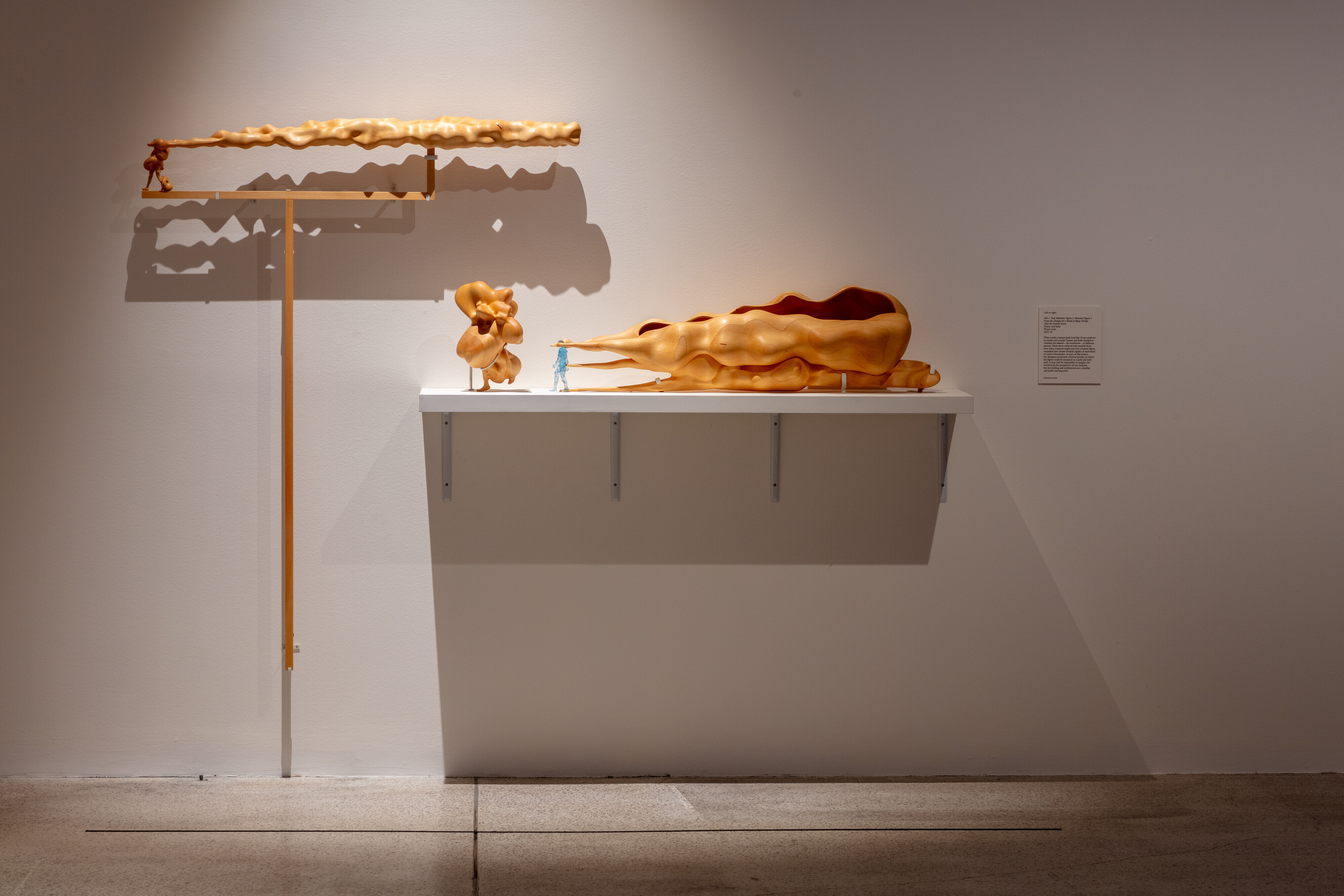
Design in a minor key
Considering the umwelten of other species – indeed, considering other species at all – might be seen as debilitating for designers. The designer is rarely in control of the full life cycle of a product, with all of the damage to other species that ensues from its associated extraction, production and disposal. So to what extent is more-than-human design a disabling form of practice, and to what extent is it enabling? Or, what old ways of thinking does it close down and what new ways does it open up? If the designer were a Jain, who tolerates no harm to even the tiniest insect, it would be difficult to manufacture or build anything in good conscience. Does that mean we build nothing, or that we consign ourselves to endless hypocrisy? The anthropologist Eduardo Kohn is instructive on this point. In How Forests Think, he describes the deep spiritual connections that the Runa peoples of the Amazon possess with the animals of the forest, even embodying them in their dreams. ‘[T]rans-species interactions depend on the capacity to recognise the selfhood of other beings’, he writes.⁵ But this does not mean that the Runa do not hunt – rather, it is what makes them good hunters. Like the Ye’kuana, who ask permission to cut their weaving materials, that acknowledgement of the animate life of the forest is what binds the Runa into the web of relations, and keeps their ecology in balance.
Such more-than-human, or beyond-the-human, anthropology has much to offer design. Recognising the lifeworlds of other species is a critical part of that shift in perspective discussed earlier. And observing the role that even the humblest of species play in an ecosystem is crucial to attuning ourselves to it. That is certainly the message that another anthropologist, Anna Lowenhaupt Tsing, has for designers. She often describes her practice as one of ‘noticing’. Noticing the way the matsutake mushroom thrived in forests that had been damaged by fire or logging, and the economies that surround the matsutake, offered a clue to what she calls the ‘arts of living on a damaged planet’. As she says later in this book: ‘Noticing is my way of opposing a particular modernist practice of looking towards an imagined future’. Such futures, driven by confidence in our own technological prowess, always overlook the side effects. These might be the unintended consequences of imperial and industrial infrastructures such as plantations, canals or seawalls, which throw local ecosystems out of balance. Monocultures such as plantations are breeding grounds for pathogens and destructive fungi. Tsing calls these consequences ‘feral effects’, and she is clear that designers need to get better at anticipating the feral effects of their projects and masterplans.
Where does this leave design? As a discipline, at least in its modernist incarnation, design is a heroic mode of being – designers are tasked with solutions, they intervene with proposals. A form of design that is inherently cautious, based on noticing and anticipation, requires a shift in mindset. If designers are used to occupying centre stage, it is time to acknowledge that there is no centre anymore, but an infinite number of entangled stages. The philosopher Isabelle Stengers calls this ‘escaping the major key’. As she explains, ‘there is no form of practice independent of its environment’, and we can infer from that that designers, architects and civil engineers ought to be thinking with the particularities of an ecosystem.⁶ Design in a minor key, then, means dispensing with the heroism and cultivating a radical hesitancy. It may mean thinking twice before acting or, indeed, not acting at all.
If that sounds passive or defeatist, it is not. Rather, design in a minor key is an entreaty to put in the slow work of noticing before rushing in with solutions. It means truly understanding the particularities of a place, and the life that resides there. One of the hallmarks of modernity has been the desire to apply standardised solutions, be it concrete infrastructures, universal plastic everything, monocultures, repetition, repetition, repetition. It is in challenging the efficiency drive that the true political content of more-than-human design may lie. In not just slowing down the gears of business-as-usual development but proposing alternative approaches that respect the living world. Call it ‘more-than-human’, call it ‘regenerative’, or just call it coexistence.
Justin McGuirk
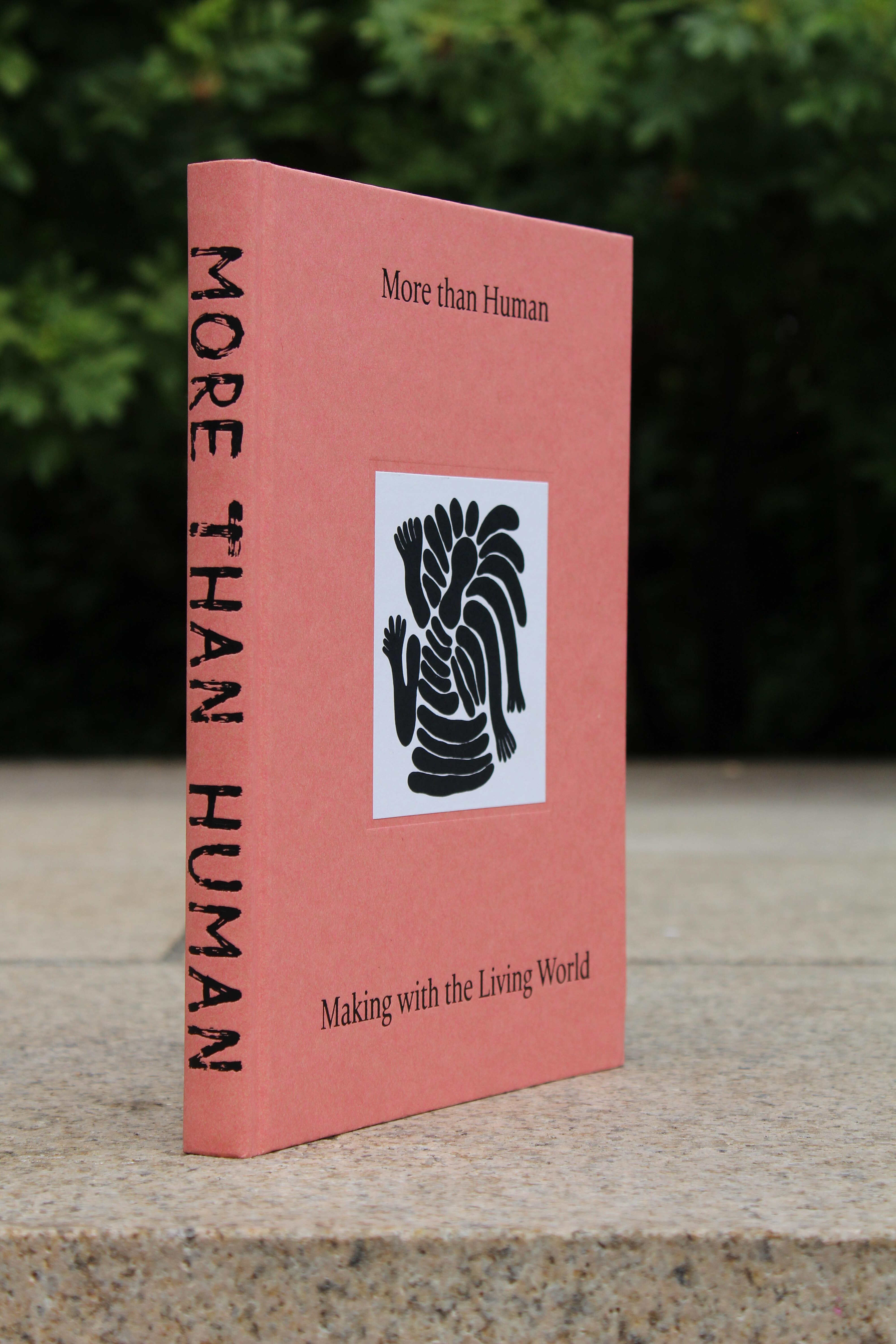
Bibliography
David Abram, ‘On the Origin of the Phrase More-Than-Human’, in César Rodríguez-Garavito (ed.), More Than Human Rights: An Ecology of Law, Thought and Narrative for Earthly Flourishing (New York: NYU Law, 2024), 314.
Charles Darwin, From Formation of Vegetable Mould through the Actions of Worms with Observations on Their Habitats (1881), quoted in Jane Bennet, Vibrant Matter: A Political Ecology of Things (Durham, North Carolina: Duke University Press, 2010), 95.
Michel Serres, The Natural Contract (Ann Arbor, Michigan: University of Michigan Press, 1995), 33.
Donna Haraway uses this phrase in ‘Tools for multispecies futures’, in Journal of Design and Science, October 2019.
Eduardo Kohn, How Forests Think (Berkeley, California: University of California Press, 2013), 116.
Isabelle Stengers, ‘Introductory notes on an ecology of practices’, in Cultural Studies Review, March 2005, 187.
